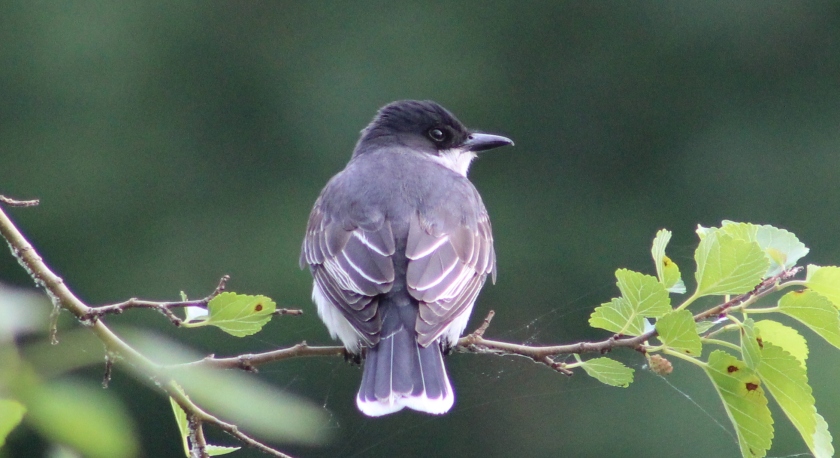Today we took our first summer birding trip down to Cape May Point State Park. It was a really hot day, around 90 degrees, but we still managed to see 30 species birds. On the drive down it was pretty foggy, and it was still pretty misty by the time we got down to the Point.

Bird species along the main trail included Mute Swans, Mallards, Tree Swallows, Common Yellowthroats (heard), Forster’s Terns, Laughing Gulls, Ospreys, Northern Mockingbirds, Purple Martins, Canada Geese, an Eastern Kingbird,and Red-winged Blackbirds. There were also hundreds of tiny toads hopping across the trail.


We had a few fun surprises on the beach. Two Brown Pelicans flew by over the ocean.

After I took the above picture the pelicans skimmed very close to the ocean’s surface. They used an aerodynamic phenomenon call the “ground effect”. As the pelicans fly close to the water with their full wingspan, the air is “funneled” between their wings and the ocean surface. This effect allows the birds to stay aloft and increases efficiency. Eventually the bird must gain some speed by flapping and slightly ascending in order to continue its glide. Many birds use the ground effect over water, but this principal also works on land.
Another interesting thing to note about these Brown Pelicans: the bird on the left is an adult and the one on the right is immature. You can see the whitish-yellow of the adult’s head that the immature bird lacks.
We also spotted pods of dolphins! They were relatively close to the beach, and would occasionally leap out of the water (wish I captured that in a picture!).

There were also many pairs of American Oystercatchers. Some pairs were just strolling along the beach together, while others were guarding/sitting on eggs. This pair has a banded Oystercatcher, so I’ll submit my band findings to the American Oystercatcher Working Group and let you know what I find out.


This couple added some furnishings to their nest site…

We were also really lucky to catch a glimpse of this couple’s two eggs (from a safe distance behind the barrier zooming in with the camera of course!) It was our first time seeing American Oystercatcher eggs.

Our final beach surprised was a Sanderling in breeding plumage. It was all by itself, so I wonder where its flock mates went. Sanderlings are usually at the shore in the winter, so I think this little guy missed the memo that its summertime now.

Our misty Cape May trip was a great way to start off our summer birding.







































 “Pete McLain” is a male who in 2016 was one of the first Piping Plovers in years to nest at Island Beach State Park, right across Barnegat Inlet. He returned in 2017 and successfully raised a chick with his partner “Diane”. In 2018, Pete started spending time at Barnegat Light instead of Island Beach. Pete ended up meeting Phoebe and she accepted his courtship displays.
“Pete McLain” is a male who in 2016 was one of the first Piping Plovers in years to nest at Island Beach State Park, right across Barnegat Inlet. He returned in 2017 and successfully raised a chick with his partner “Diane”. In 2018, Pete started spending time at Barnegat Light instead of Island Beach. Pete ended up meeting Phoebe and she accepted his courtship displays.